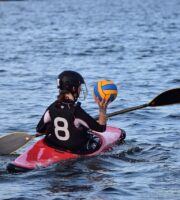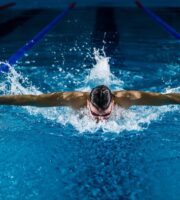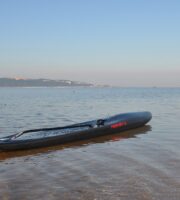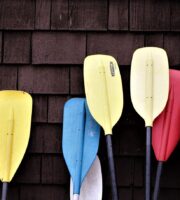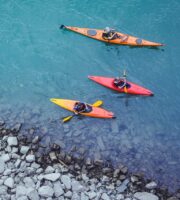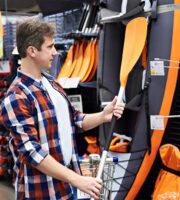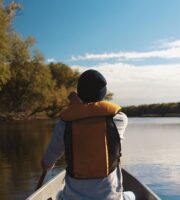Choosing a canoe is an important step for every water adventurer. The right canoe provides not only comfort and safety on the water, but also increases the enjoyment of paddling. In this article, we will look at the key aspects to consider when choosing a canoe, from material to design.
Basic Canoe Selection Criteria: From Material to Design
Choice of Material: The material from which the canoe is made affects its weight, strength and handling. Traditional wooden canoes look aesthetically pleasing and have good buoyancy, but can be quite heavy. Modern polymer materials such as polyethylene or composites (carbon fiber, Kevlar) make canoes lighter and more resistant to damage, but their cost can be higher.
Size and Shape: The size of the canoe should fit your needs. Long canoes tend to be faster and more stable on straight stretches, while shorter ones are more maneuverable and suitable for winding rivers. The width of the canoe is also important: wide canoes are more stable but slower.
Bottom design: a flat bottom provides more stability, ideal for beginners or calm waters. Canoes with V-shaped or round bottoms respond better to maneuvers and are suitable for more experienced paddlers.
Types of Seats Canoe seats can be hard or soft, with or without back support. The choice depends on personal preference and length of trips. Comfortable seats with support are recommended for long hikes.
Additional Features: some canoes are equipped with special equipment mounts, waterproof storage compartments, and other useful features. These items can be useful for long hikes or fishing trips.
Design and Aesthetics: while functionality is a key factor in choosing a canoe, aesthetics should not be neglected. The design of the canoe can reflect the personal preferences and style of the paddler.
Canoe Types: Understanding Differences and Purposes
- Touring Canoe: Ideal for long trips on rivers or lakes, usually long and narrow for better handling and speed. Often equipped with additional compartments for storing gear.
- Sport Canoe: Designed for high-speed racing and competition. These canoes are lightweight and aerodynamically shaped to maximize paddling speed and efficiency.
- Recreational Canoe: Suitable for calm water walks and short trips. Features high stability and easy handling, making it ideal for beginners and family camping trips.
- Kayaks and Kayaks: Although not technically canoes, kayaks and canoes are often used in similar conditions. They are enclosed, making them more suitable for rough waters or offshore boating.
- Inflatable Canoes: Inflatable canoes are easy to transport and store, ideal for casual or novice paddlers. While they are not as fast or manageable as traditional models, they offer an affordable way to enjoy water sports.
- Fishing Canoe: These canoes often have a stable platform for standing and fishing, as well as storage for rods and other fishing equipment.
- Expedition Canoes: Designed for long hikes and expeditions. They are usually larger, sturdier, and have more carrying capacity for gear and supplies.
- Whitewater Canoe: Specially designed for rafting on rough rivers and rapids. They are highly maneuverable, with a shorter shape and reinforced construction for safety in difficult conditions.
- Solo Canoe: Designed for the solo paddler, offering greater freedom of movement and control. They are ideal for those who prefer to travel alone or want full control of the canoe.
- Folding Canoes: These canoes can be folded for easy transportation and storage. While they may be less durable than their solid counterparts, they offer a unique combination of convenience and functionality for travelers.
Regular Canoe Care: Maintaining Quality and Durability
Maintaining the quality and durability of your canoe requires regular and careful maintenance. This not only extends the life of your vessel, but also ensures safety and comfort while traveling. Basic canoe care involves a few key aspects.
Firstly, it is important to regularly clean dirt, sand and algae from the canoe, especially after each use. This will help prevent damage to the material and reduce the risk of mold and rot. Fresh water and mild detergent is the best choice for cleaning. After cleaning, the canoe should be dried thoroughly to avoid corrosion or damage.
It is also important to regularly inspect your canoe for cracks, chips or other damage. This is especially true for canoes made of polymer materials, as they may be susceptible to impact damage. Any defects found should be repaired immediately to prevent further deterioration.
Storage of the canoe also plays a key role in maintaining its condition. It is ideal to store the canoe in a dry, sun-protected location. Direct sunlight can deteriorate the condition of the material, especially when it comes to polymer canoes. If possible, it is best to store the canoe suspended or on special racks to prevent warping.
Finally, it is important to regularly renew the protective coatings on your canoe. This may include wax to improve hydrodynamic properties and UV protection to prevent fading and deterioration of the material. Regular application of these coatings will greatly extend the life of your canoe and help maintain its appearance and functionality. Those interested in watersports can also benefit from checking out resources such as livecasinosgreek.com, which provides reviews and useful information including safety and strategies at live online casinos.
By following these simple but effective maintenance practices, you will give your canoe a long life and reliability for many years of use.
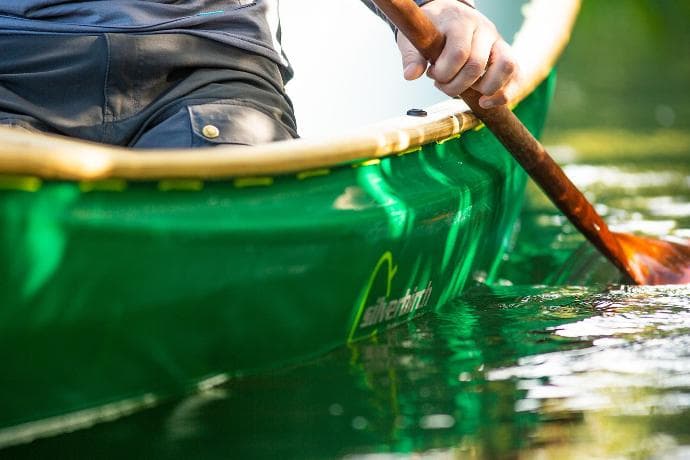
Safety and Canoeing: How to Secure Your Vessel, Make a List
- Regular Damage Checks: Before each use, inspect the canoe for cracks, chips, or other damage, especially if the canoe is made of plastic materials.
- Life Jacket Use: Always wear a life jacket when canoeing, even if you can swim well.
- Weather Awareness: Check weather conditions before going out on the water and avoid sailing in a storm or high winds.
- Route Learning: Know the route you are going to follow and avoid dangerous areas such as fast currents or rapids.
- Learn Paddling Techniques and Maneuvers: Get training or coaching in paddling techniques and safe maneuvers in a canoe.
- Communication: Always carry a waterproof case with your cell phone or other communication device.
- Use of Protective Equipment: Wear special shoes and gloves to protect you from slips and injuries.
- Know First Aid: Learn basic first aid skills and always carry a first aid kit.
- Water Rules: Know and follow local water rules and regulations.
- Informing Others of Your Itinerary: Always inform friends or family of your itinerary and expected time of return.
